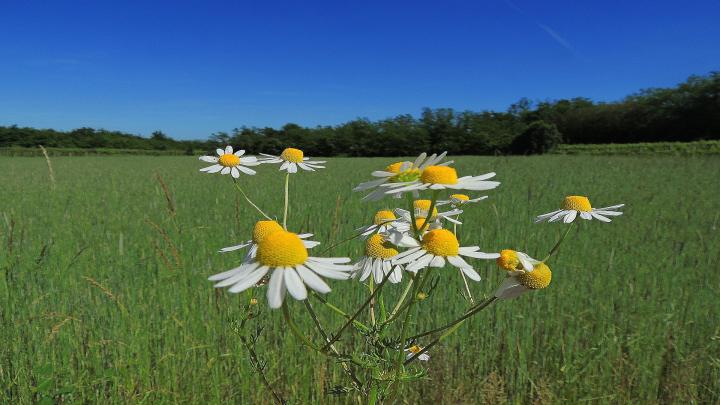Archaeology and legends in Mazzè, Canavese land
Height difference: 100 m
Total time: 2.30 hours
Difficulty: T
Signs: red white, green white (occasional)
Suggested period: all year round
Map: scale 1:20.000, Map n. 7 of the Anfiteatro morenico d'Ivrea (Ivrea Morainic Amphitheater), Ed. Mu
Mazzè and its castle are the last outpost of the great moraine circle of what was once the immense Baltese glacier. Here the Dora opens its way to reach the plain and descend to join the Po. The Roman road that connected Eporedia (Ivrea) with Quadrata and Industria passed through these parts. By fording the river, the Salassians first and the Romans later, searched for gold by sifting the sands carried by the glacier. It was a less impressive activity than that of the Bessa, north of the Serra di Ivrea, where a nature reserve now protects the spectacular piles of pebbles, a remnant of the gold soil washing, but still considerable covering an area of 150 hectares from which at least 20 tons of gold were extracted.
Long ignored for a long time the Roman goldbeds of Mazzè, circumspections at the beginning of this century made it possible to ascertain that all those stones emerging here and there were not natural but the result of anthropogenic transformations. Research conducted with the Superintendence revealed the presence of the remains of drainage channels, dejection conoids, pebble dumps and a well-preserved section of the Roman road, as well as hut bases, traces of a barbarian settlement. The presence of the Roman road is connected with that of an ancient ford on the Dora Baltea and the docking of rafts that went up the river. The historical truth about the emptying of the great Canavese lake of which Viverone and Candia are the last remnants overlaps, however, with the legend of Queen Ypa and her rival Mattiaca. Witch, sorceress, perverse lover, Druidic priestess, fairy the former, susceptible goddess the latter. Time and space contract and then dilate: years, centuries, millennia, Celts, Ligurians, Salassi, Romans mingle with each other, weaving themselves into unlikely paths. But as Hugo Pratt has Morgana say in one of the Corto Maltese stories, "Our world will never die ... As long as there is someone capable of dreaming ... we will exist."
The" Ypa Trail" and the "Glacier Gold Trail" link up and partly overlap in a long and instructive walk accompanied by appropriate explanatory panels along the cart tracks of this corner of Canavese, a stone's throw from the Lake Candia protected area. And on the town square, right in front of the town hall, a menhir reused as a funerary stele, twin to the one found on the market square in Chivasso, seals the beautiful walk.
Access. From Mazzè continue on the SP that leads to the bridge over the Dora di Villareggia, turning right (signs) onto the dirt road that leads to the parking lot.
Itinerary. From the parking lot (216 m) continue along the paved road. Arriving near the former landfill, continue straight through vineyards and fields in what was the paleo-riverbed of the Dora Baltea abandoned by the river some 20,000 years ago. Just beyond, after a short climb, near a pylon, you turn left continuing to the entrance of a gravel pit. You skirt its fence then descend to the left. You then leave the beaten track to turn left again, and then right. You walk along a section of the Roman road and come to the clearing in the center of the archaeological area. To the right you descend alongside the Roman road to the ford on the Dora where the "Glacier Gold" trail ends.
Turn back and continue straight on the Ressia road. After a few meters, a detour to the left leads to the landfill cobblestones. Resuming the path on Ressia road, you reach the pylon of the same name and the Boschetti Road. Following the latter, one can return to the starting point while, continuing further, one reaches the Church of San Lorenzo and Giobbe built in the 10th century on the ruins of a Roman tomb located on a landfill cordon (1.30 hours). A little further on, you come out onto the provincial road where you turn left. Follow it for about 200 meters, then cross it to take the dirt road that descends to skirt the Dora. In winter, a variety of wintering duckweed species can be seen in the lake formed by the dam. You pass the former Darsena, which was the private landing place of the lords of Mazzè, and after a few hundred meters you leave the valley floor to climb up to the left (Ypa and GTB markings). After a rather steep section, follow the small road to the left that leads to a fork where you can indifferently follow either path. Confluent on the dirt road coming from the Masi region, continue to the left. Fighting at times with the invasive brambles, one climbs skirting the Rocca Plà more and more decisively, thus reaching the top of the hill and the area of the Castello near the Church of San Michele. Following Via Al Castello, one descends to the main road along which one returns to the starting point, not before a digression on the square to observe the stele.
Testo di Aldo Molino e Filippo Ceragioli
Foto Aldo Molino
In collaborazione con @piemonteparchi : http://www.piemonteparchi.it/cms/index.php/territorio/sentieri-provati/i...

